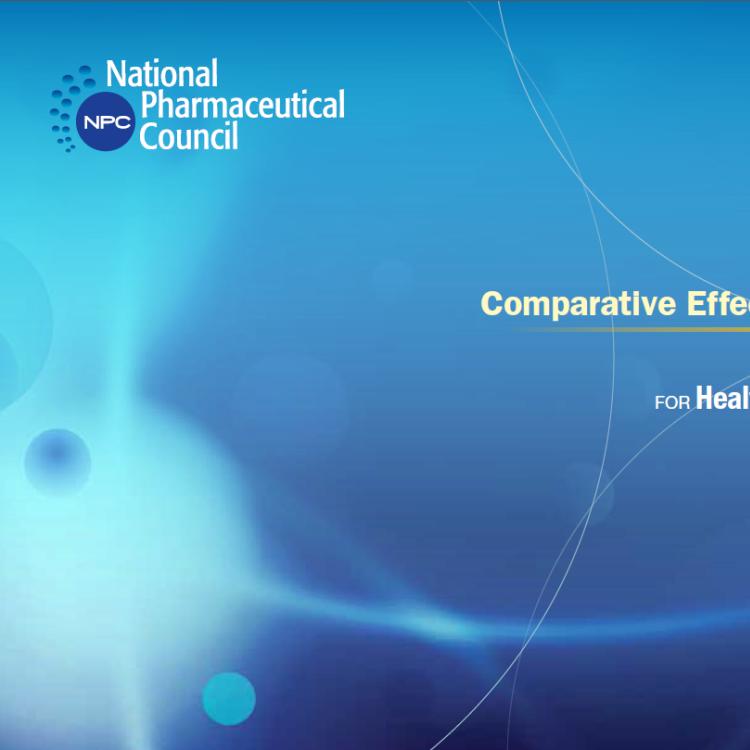Authors: Hofelich, A; Westrich, K; Walker, K; Kowlessar, K; Wihelm, J.
Publication: March 2015
The National Pharmaceutical Council’s (NPC) fifth annual survey, "Comparative Effectiveness Research (CER) and the Environment for Health Care Decision-Making," provides a snapshot of stakeholders’ perceptions of the key players in the main aspects of the CER process, from setting priorities to translating and disseminating the research findings.
Among the findings:
- CER’s importance in the health care landscape was clearly recognized by stakeholders, with 92% of respondents saying it is “very important” or “somewhat important,” which is consistent with their responses in previous years. Although these respondents view CER as important, its impact has not yet been felt. “Moderate” or “substantial improvement” in health care decision-making because of CER won’t likely be felt for another three (83%) to five years (93%).
- The Patient-Centered Outcomes Resource Institute (PCORI) (75%), the National Institutes of Health (NIH) (63%) and the Agency for Healthcare Research and Quality (AHRQ) (62%), respectively, are viewed as leaders in setting the research priorities that will be addressed by CER.
- When it comes to playing key roles in establishing research standards, PCORI is seen still on top at 77%, possibly because it requires its grant recipients to follow the research standards set out in its methodology report. AHRQ (68%) was next, followed by NIH and academia, both at 50%.
- PCORI also was recognized by respondents as the key organization in funding and monitoring research (81%), followed by NIH (73%) and the biopharmaceutical industry (65%), which makes large investments in research.
- Expectations for leadership in conducting research are strongest for academia (86%), the biopharmaceutical industry (60%) and NIH (48%).
- In assessing which stakeholders are expected to play the greatest role in the translation and dissemination of research, AHRQ (78%), PCORI (69%) and academia (60%) are perceived as the lead players. AHRQ is also tasked by federal law to disseminate PCORI’s work.
The survey also asked respondents about the health care decision-making environment, considering factors that could impact the quality of CER and its usefulness in making treatment and coverage decisions:
- Stakeholders remain optimistic that there is growing movement toward widely agreed-upon research standards, which would provide more consistency in the conduct and evaluation of CER. In the survey, 49% of respondents acknowledged this trend, a statistically significant difference from 24% in 2011.
- Despite the growing focus on patient-centered care, only 41% of stakeholders felt that research priorities adequately addressed the treatment choices faced by patients and providers.
- Less than half of respondents said that there is no or little transparency in the processes used by decision-makers to interpret evidence.
- Fifty-eight percent of respondents said that the value of treatments remains narrowly focused on only clinical effectiveness, rather than taking into account factors that matter to patients, such as quality of life, workplace productivity, adherence to treatments and other outcomes.
- Sixty-seven percent said that the evidence base is not complete enough to inform the choices faced by patients and providers.
- Forty-four percent felt that the use of real-world evidence in making health care decisions is still limited.
- When it comes to accounting for variability in patient responses, 43% of respondents felt that individual treatment effects are not taken into consideration.
Survey Parameters:
The survey, conducted by Scientific & Social Systems on behalf of NPC, was fielded between September 23, 2014, and January 16, 2015, among key stakeholders who are knowledgeable about CER. These stakeholders included researchers/thought leaders; government; insurers/health plans; employers; business coalitions; and associations. A total of 122 stakeholders participated.



